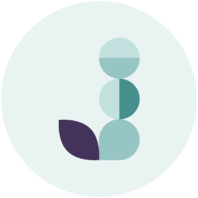SAVE on Parent PLUS Loans: The Double Consolidation Loophole
The new SAVE plan is already helping students and families lower their monthly payments. While the guidelines currently present barriers for borrowers with Parent PLUS Loans, there is a way around them in some cases, commonly referred to as the “double consolidation loophole”.
Parents who have more than one Parent PLUS Loan - or students who have either Direct Consolidation Loans or FFEL Consolidation Loans that have repaid any Parent PLUS or FFEL Parent PLUS Loans - may be able to “carve a path” to eligibility for SAVE. It can be an extensive process, but for low-income families, it can allow for more manageable monthly payments and qualify families for forgiveness.
How does the “double consolidation loophole” work?
Ultimately, it’s just consolidating certain federal loans two or more times until the Parent PLUS code is no longer attached to the loans - and it’s only available until 2025. It’s important to follow these steps exactly to ensure future eligibility:
- Submit two paper applications for consolidation, each to a different servicer (do not choose MOHELA if seeking PSLF) - one application for the non-eligible loans and one application for the SAVE-eligible loans.
- Complete and submit an income-driven repayment application for income-contingent repayment with the consolidation applications.
- After receiving the new payment schedules, start a new consolidation application with a different servicer (choose MOHELA if seeking PSLF), but place a call to this servicer to complete the application and enroll in SAVE.
- If a call is not placed, the only IDR plan available will be income-contingent repayment. A fourth consolidation application would then need to be submitted after this loan becomes active to potentially enroll in SAVE online.
Before SAVE was implemented, the loophole would eventually offer the REPAYE plan in the online application for Income-driven Repayment. With the new regulations, SAVE is only available by calling the servicer during the third step.
The loans will enter deferment or forbearance during the consolidation process, which is about 30 to 90 days. Loan codes and account numbers are available on studentaid.gov after selecting “consolidate my loans” - do not submit an online consolidation application during the first round. It’s important to keep the eligible loans separate from the ineligible loans for this step.
For borrowers seeking Public Service Loan Forgiveness (PSLF), MOHELA is the servicer for that program. Reserve them for the last consolidation step to have any prior payments reflected or adjusted.
Are there any limitations to double consolidation for Parent PLUS loans?
Parents who don’t hold other federal loans and only have one Parent PLUS Loan won’t qualify under this loophole, unfortunately - the only IDR plan available will be income-contingent repayment, which is around 20% of discretionary income. This still allows for forgiveness after the required number of payments.
While the steps might seem overwhelming at first glance, this is largely a waiting game. Servicers can move slowly, so take that into consideration when starting the process.
For borrowers with Parent PLUS loans who don’t qualify for income-driven repayment plans, refinancing with a private lender can sometimes offer lower rates. The loans will lose federal protections in that case, however it’s also the only path to transfer them into the student’s name, a priority for some families.
Juno has options for borrowers looking to transfer their Parent PLUS loans to the student. Schedule a free call with an expert to find out more.

Written By
Juno Team
Juno came into existence to help students save money on student loans and other financial products through group buying power by negotiating with lenders. The Juno Team has worked with 200,000+ students and families to help them save money.

